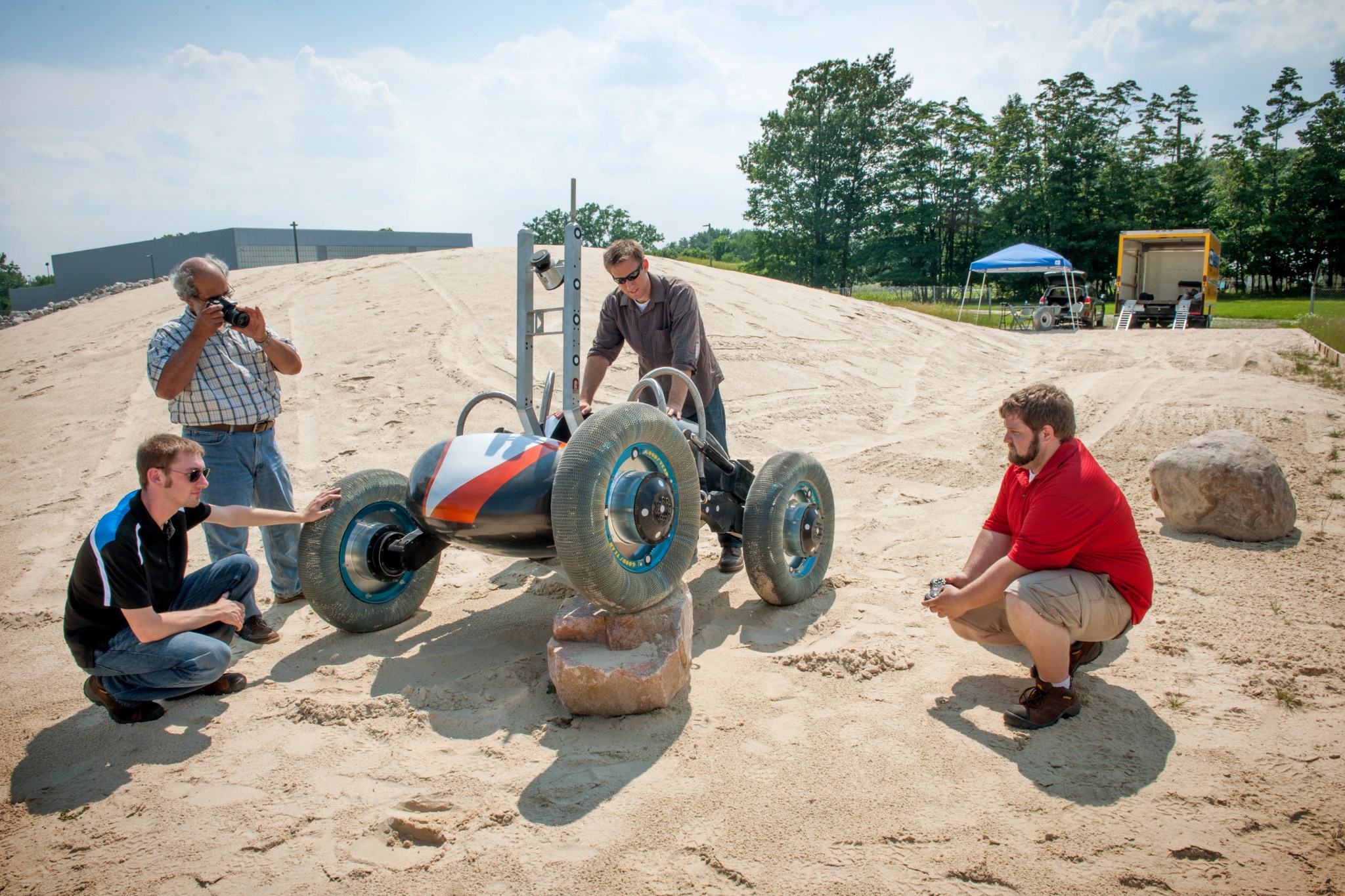In an open field on the campus of NASA’s Glenn Research Center, a large sand dune rises up and if you watch for a few moments, you may see a rover crest over the hill. This is one place where NASA tests and evaluates the components of advanced rover vehicles and their power systems.
As NASA continues to explore the surface of Mars and considers the Moon, Glenn’s indoor SLOPE (Simulated Lunar Operations) lab and the new outdoor Dunes Mobility Test and Demonstration Field are putting rovers through their paces to test the ability to move over challenging terrain.
“The Dunes complements the indoor SLOPE lab, providing more flexibility in the testing and demonstration of large vehicles due to the increased space,” says Colin Creager, a researcher studying surface mobility. “We have a much wider area including three different slope angles of 10, 15 and 20 degrees and an obstacle course with boulders, moguls and small hills. Due to the lack of confinement and higher humidity, dust is not as much of a health risk when testing outside, which allows demonstrations to larger audiences.”
Scarab, a four wheeled robot built at Carnegie Mellon University through funding from NASA, has been used to demonstrate lunar prospecting, among other things. It is frequently used at Glenn to test new tire designs for space applications.
When driving on the Moon, normal rubber tires are not an option because the extreme high and low temperatures can make the rubber weak and brittle. A puncture would immobilize the vehicle ending the mission.
The tires currently on Scarab are called “Spring Tires” and were designed as part of a collaboration with the Goodyear Tire and Rubber Company. These tires use mesh made from steel springs and can handle up to 550 lbs. per tire. The spring mesh can conform to the terrain very well, allowing the vehicle to generate high traction in soft soil and climb over rocks without losing much energy.
According to Creager, the outdoor Dunes field can be used to help test the navigation, control and power systems of rovers. For example, Glenn is conducting advanced fuel cell power systems research. As these systems evolve into newer, more efficient and powerful designs, they will be implemented on Scarab and tested at the Dunes or the SLOPE lab.
Creager and his team plan to extend the 100 ft. x 80 ft. Dunes to include an additional 250 ft. x 20 ft. flat area for manned vehicle testing, including vehicles for Earth applications. “This would allow us to do traction tests on vehicles several thousands of pounds in weight, which is not possible in the SLOPE lab,” explains Creager. “By driving the vehicles on soil and applying pulling forces, we can compare the tractive performance and power efficiency of different systems to determine the most appropriate tire or mobility platform.”
As NASA continues to develop robotic and rover technology for use on the Moon and Mars, and as vehicle designs for Earth applications advance, the Dunes and SLOPE teams are tailoring mission specific testing plans for components, operations and efficiency.




























